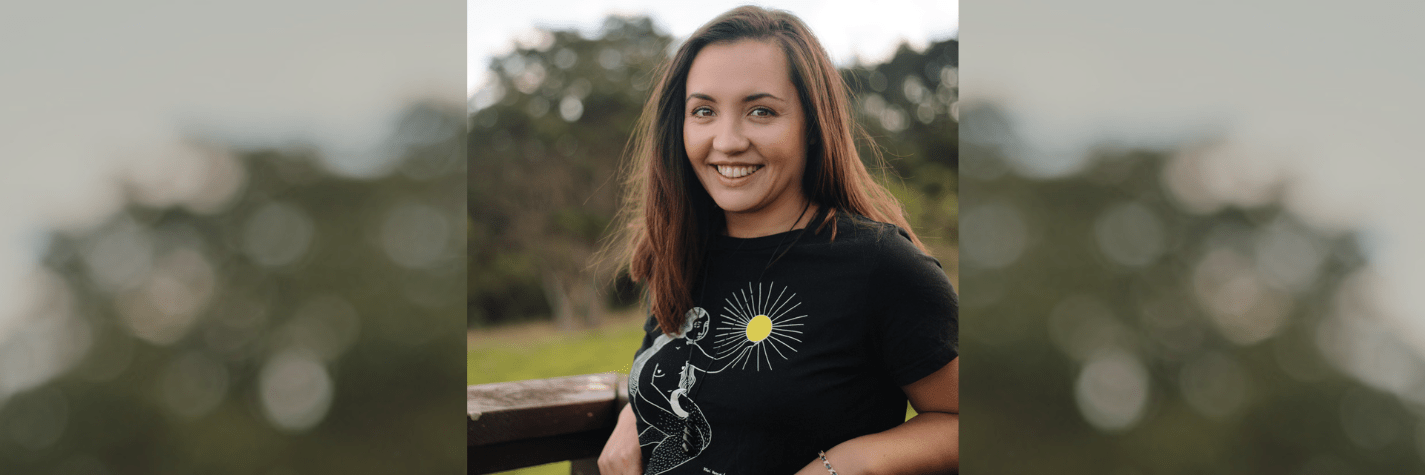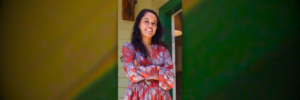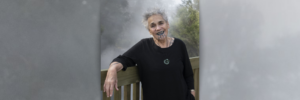
Ataria Sharman (Tapuika, Ngāpuhi) is an editor and writer. Born and raised in Te Whanganui-a-Tara, she now lives in Hikurangi, Whangārei, Te Tai Tokerau. Ataria has a Master of Arts and spent a year researching mana wahine and atua wāhine and interviewing Māori women about their experiences with atua wāhine. The manuscript for her children’s fiction novel Hine and the Tohunga Portal was one of five selected for the Te Papa Tupu writing mentorship programme in 2018 and went on to be published by Huia in 2021. Hine and the Tohunga Portal was a finalist in the 2022 New Zealand Book Awards for Youth and Children. The creator of Awa Wahine, a platform dedicated to celebrating and promoting the voices of wāhine Māori, Ataria, has self-published a collection of writings on the atua wāhine and a printed magazine of work by the group. She was formerly the editor of The Pantograph Punch.
Sometimes writers talk about their book as if it is something they’ve birthed – a struggle as well as a gift. If you were to think of your book, Hine and the Tohunga Portal, who are its whanaunga? Who helped you bring this book into the world?
The year I wrote Hine and the Tohunga Portal was strangely productive in that I finished the Hine and the Tohunga Portal manuscript and my Master’s thesis. In the years that followed, I’ve been way less productive with writing and more recently, I’ve been thinking about why that is. I’ve realised that the anxiety of having a thesis due manufactured the momentum to write a fantasy children’s fiction novel as a welcome form of procrastination. During that year of researching the atua wāhine, they inspired me. I wanted to bring them into this fun adventure for tamariki to connect and relate to them as characters. Connected to researching the atua wāhine was my matrilineal whakapapa on my Māori side, which I reference in the acknowledgements of Hine and the Tohunga Portal: ‘E tika ana kia mihi au ki ngā tīpuna kuia nei ki a Papatūānuku, Hineahuone, Hinetītama, Hineteiwaiwa tae noa mai ki a Kanarahi, Rangipikitia me Herapia.’ It starts with atua wāhine and then goes to my grandmother’s. I like to think that they and many others are the whanaunga for this pukapuka and some of the other works I’ve been a part of.
What tikanga or kawa do you apply to your writing process?
I like to write when I’m feeling good. When my tari is clean and maybe after some self-care practices. My best writing is in the morning and early morning because it flows and you feel better before you get tired and grumpy during the day. I have to say, though, I haven’t been getting up early to write lately, haha! It’s too cold these winter mornings. A way around this is to put my laptop right next to the bed and write sitting up, which I’ve done before. Another process I’ve brought into my writing practice is workshopping my ideas with others, such as sitting down with some taiohi to discuss the plot of the sequel to Hine and the Tohunga Portal. I think it’s cool they can be involved in brainstorming, and can be a fun and inspiring experience for them. One said after that she’d also like to write a book, and I said I’ll help you edit it if you write it. I think giving back to the community is important, so if a school or library asks me to visit, I’ll try to do so, even if I’ve got a lot on. Suppose I can make time to attend book awards or do interviews. Making time for grassroots community and schools is even more imperative because they are why I wrote Hine and the Tohunga Portal in the first place. Although I acknowledge I don’t have tamariki, which would make it even tougher to fit everything into the schedule, I’m sure!
What do you hope your mokopuna will think of your book? What will their reactions be?
Instead of mokopuna, I like to think of my nephew because it looks like mokopuna will be very far away! My nephew’s name is Hōhepa, he’s two years old, and the character with that name in Hine and the Tohunga Portal is named after him. I hope when he’s old enough to read the book, he’ll enjoy reading an adventure through the eyes of a character that hopefully he can identify with and a world that connects with his whakapapa.
What was it like to hold your book in your hands for the first time?
The best feeling in the world. That you made this thing, how amazing it looks, how proud you are.
What was it like to work with iconic publishers HUIA?
I feel privileged to have worked with HUIA on Hine and the Tohunga Portal. HUIA is a Māori-owned and led organisation, which is massive to me. Seeing the photos of the HUIA stall at Te Matatini this year was so cool; I think they sold out many books there. I love having a publisher who will take your mahi into spaces where whānau Māori can access it. The artist Reweti Arapere and HUIA did an excellent job with the cover art. Sometimes I look at the face of Hine and her poi on the cover art, see parts of myself and feel very grateful.
Awa Wahine is a huge part of your mahi, a social movement and a community in addition to publishing. What was the driving force to start Awa Wahine and what was the push to move into physical publications?
Awa Wahine also came out of my Master’s year (it’s a miracle I finished my studies). It was born of a desire to share my writing on topics like menstruation or sex. This came to me strongly after reading Ngahuia Murphy’s thesis on precolonial Māori menstruation. The digital blog is, in many ways, a place for contributors to process their emotions, from grief and anger to passion and love. In the Atua Wāhine Collection, contributors share their connections to the atua wāhine.
On the other hand, I feel like the printed magazine is still developing an identity, and I’m here, bringing everything together with contributors, the cover artist and the budget the best I can. The latest issue has a strong motherhood focus, which may continue to come through. The move into physical publications came because I love printed magazines and won’t even read a digital one. The smell and touch of the paper, the personal essays and paper goodies that some publications like Frankie include, such as posters and postcards. Reading those kinds of printed magazines and displaying them on my bookshelf brings me so much joy. I hope Awa Wahine magazine is like that for others too.
The Awa Wahine magazine Toru has just been released, how different is it from the earlier iterations and where do you see the magazine going next?
For every issue, I try to make it better than the last one. I now understand more about what needs to be done to get from ideation to launch. A significant difference with Toru is I have more confidence now that there’s a community of regular subscribers to Awa Wahine magazine, including schools and libraries across the motu. I know how many copies I sell, which helps me with the budget. The magazine is not funded and doesn’t break even with publishing costs, but I am sure it is coming. I could print overseas, but I like to support local and be able to go down the road to pick up the books.
What I see for the future of Awa Wahine magazine is a bigger magazine with more writing, illustrations and professional photography, paper goodies, and all contributors paid great fees. Stocked in supermarkets and bookstores nationwide. A team working on it on full-time salaries; I could even hand over the editorial to someone else and work on new projects. That would be the best! If you support that, consider subscribing.
What personal projects are you working on now or hope to be working on in the future?
I’m writing the sequel to Hine and the Tohunga Portal. The working title is Hine and the Sacred Huawhenua. I think it’s cool and kinda funny to think about a sacred vegetable as a fantasy quest item. I’m planning the Whā issue of Awa Wahine magazine and designing some stationery products. Also on the cards is another Atua Wāhine Collection; my thoughts were to focus on one atua wāhine at a time and start with Papatūānuku. If you want to learn more or contribute to any of those projects, email me ataria@awawahine.co.nz.
Photo credit: Colleen Maria Lenihan




